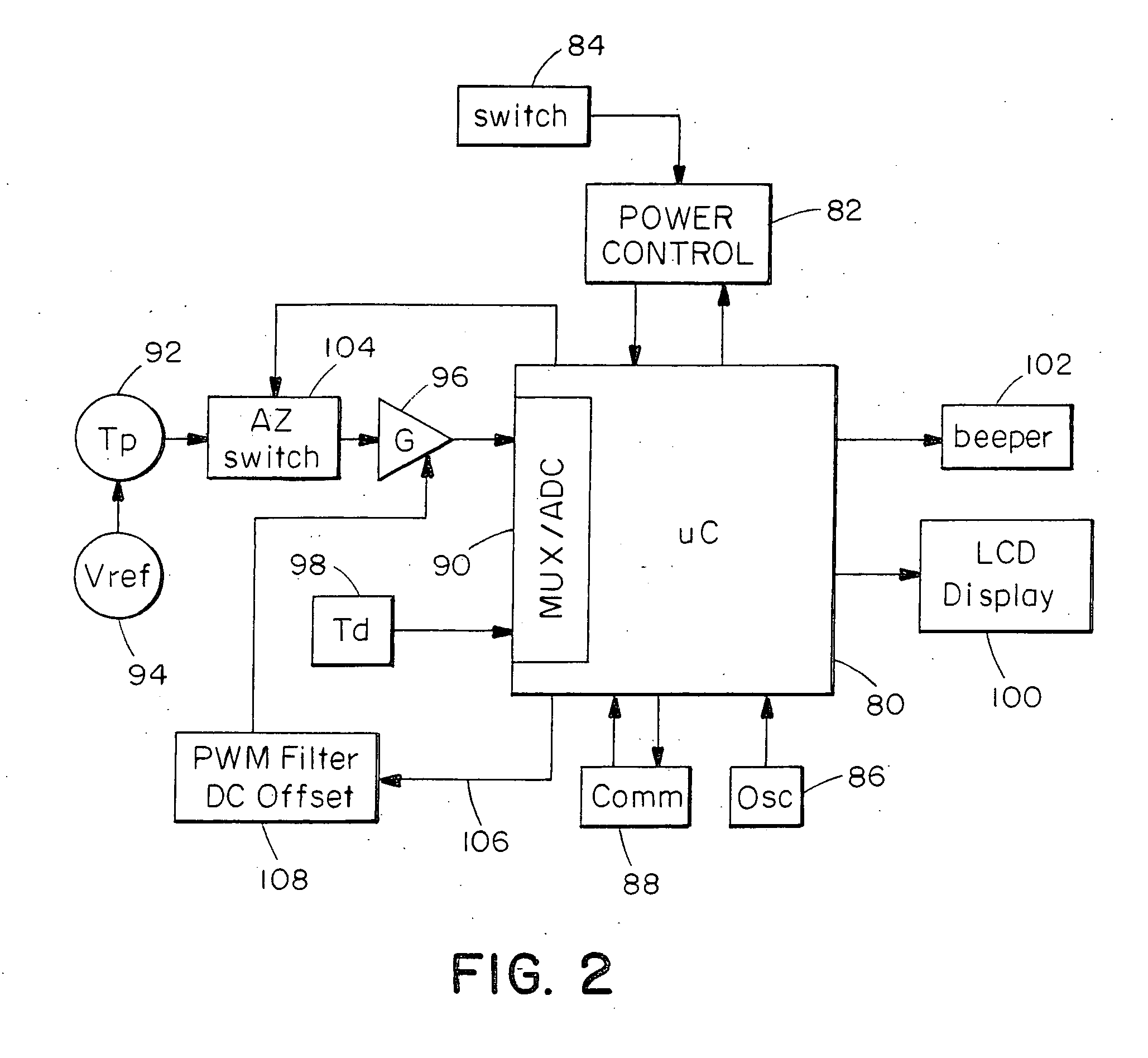Ambient and perfusion normalized temperature detector
a temperature detector and ambient technology, applied in the field of infrared thermometers, can solve the problems that the accuracy and repeatability of axillary infrared thermometry with neonates has not extended to older patients, and achieves the effect of improving the accuracy and repeatability of axillary infrared thermometry with neonates
- Summary
- Abstract
- Description
- Claims
- Application Information
AI Technical Summary
Benefits of technology
Problems solved by technology
Method used
Image
Examples
Embodiment Construction
[0024] A description of preferred embodiments of the invention follows.
[0025]FIG. 1 illustrates a radiation detector adapted for axillary temperature measurement. As disclosed in greater detail in U.S. patent application Ser. No. 08 / 738,300 a radiation detector views a target surface through a window 22. The radiation detector is preferably a thermopile for rapid response, but other radiation detectors may also be used. The detector is adapted to be held by the handle portion 24 with the sensor end inserted into the axilla. Once in position, the button 26 is pressed to begin a measurement. Electronics within the housing then compute sensed skin temperature, and using arterial heat balance equations, compute an internal core temperature for display on the display 28. In typical home applications, the core temperature is displayed as the equivalent oral temperature. Details of the electronics can be found in prior application Ser. No. 08 / 738,300, incorporated herein by reference in i...
PUM
| Property | Measurement | Unit |
|---|---|---|
| surface temperature | aaaaa | aaaaa |
| temperature | aaaaa | aaaaa |
| surface temperature | aaaaa | aaaaa |
Abstract
Description
Claims
Application Information
 Login to View More
Login to View More - R&D
- Intellectual Property
- Life Sciences
- Materials
- Tech Scout
- Unparalleled Data Quality
- Higher Quality Content
- 60% Fewer Hallucinations
Browse by: Latest US Patents, China's latest patents, Technical Efficacy Thesaurus, Application Domain, Technology Topic, Popular Technical Reports.
© 2025 PatSnap. All rights reserved.Legal|Privacy policy|Modern Slavery Act Transparency Statement|Sitemap|About US| Contact US: help@patsnap.com



